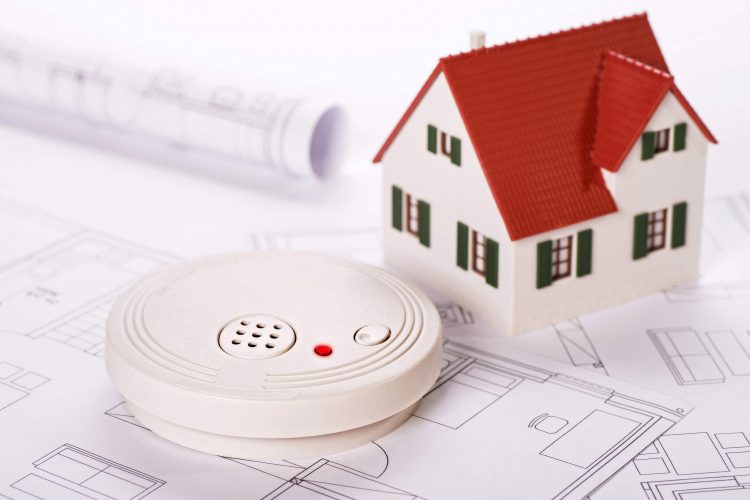There are lots of little areas to consider when you are moving into a new build property in addition to all the big decisions about bathrooms, kitchen layouts and decorating. One of them is regarding the smoke alarms in your property – potentially lifesaving but easy to forget. So what kind of alarm should you have installed?
Locations
For new build properties, there are some guidelines about where smoke alarms should be located. The majority of homes still have battery-powered alarms but in a new property, it can be a good chance to have mains-powered alarms added – that way you need never worry about replacing a battery. These alarms do need certain types of alteration and extension work so it is advisable to have them planned in quite early.
There are certain places where you should consider having an alarm, depending on the circulation space of each floor:
- Any downstairs spaces that don’t have their own exit outdoors
- All upstairs levels where there are habitable rooms
- Converted lofts
Getting Specific
While this gives you a general idea of how many alarms you may need, there are some other tips to take into account to help you get them in just the right place. Obviously, there should be an alarm on every level of the house, including the loft if it has habitable space. You should also have an alarm within 75 metres of the doors of every habitable room – that’s why hallways are a popular location for them.
Alarms should be located 300mm from walls and light fittings and if you are having them mains wired, ensure that the units meet Part P requirements (an electrician will keep you right on this). You may also want to consider a heat detector in kitchens where there is an open plan to the escape route for the house.
Wherever you locate the alarms, make sure they are easy to reach to maintain them and change batteries if needed. And also, don’t place them somewhere where they will be affected by lots of heat and cold, moisture or fumes.
Carbon Monoxide Detectors
Another important component of protecting your home and family is a carbon monoxide detector. Carbon Monoxide or CO is a tasteless, colourless and odourless gas that can make people very ill and even prove fatal. It is produced during the burning of fossil fuels such as gas and if a boiler malfunctions or a gas fire isn’t fitted correctly, CO can be released into the house.
CO detectors are a separate device from a smoke alarm and should be located 1-3 metres from the potential source of CO – the boiler in most cases. Avoid putting it in a cupboard or near a window or air vent as this could spoil readings. Try to avoid areas of excessive dust and dirt or in humid locations such as a bathroom.
You can install more than one if you have more than one source of carbon monoxide – so if you have a boiler and a gas fire or gas cooker, then one near each can be a good step.
Darren Lester is the owner of SpecifiedBy, an online platform that helps specifiers find and research building products and materials through modern search, comparison and information management tools.


